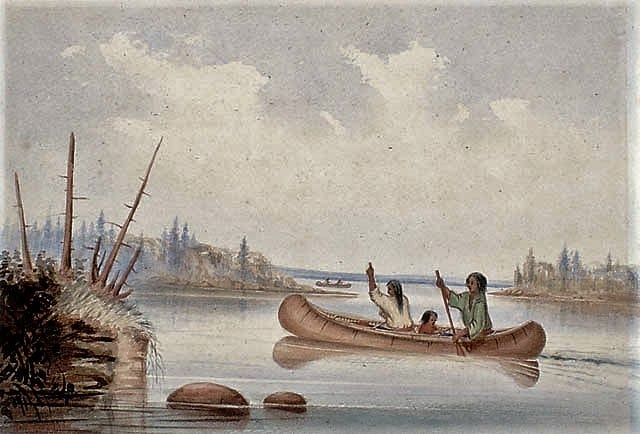
Michigan Indian Place Names are important historical records of the Saginaw Valley and Upper Thumb. We have found this brief sketch of the original names from the Anishinaabeg. There are amazing ties to many local places and rivers, each with a unique meaning.
Table of Contents
Who Are the Anishinaabe?
Anishinaabe is the autonym for a group of culturally related indigenous peoples resident in what is now Canada and the United States. These tribes include the Odawa, Saulteaux, Ojibwe (or Chippewa), Potawatomi, Oji-Cree, and Algonquin peoples.
Due to the ideal locations in sync with the land, the Anishinaabeg villages have become prosperous cities and villages we live and work in today. We have augmented this list with place names we have found in research along the way.
Select Indian Place Names In Michigan
Bad River is called Much-a-see-bee, meaning bad river.
Bagoning is Anishinaabe, Che-boy-gone-ing, meaning a river to gather wild rice.
Bay City had no name. It was confined to West Bay City, which was called Nish-qua-ta-ong, meaning where the highlands come to the river.
Cass River was called Not-a-way-sebe, meaning a peculiar black snake, now extinct, on that river.
What Does the Word Shawangunk Mean Concerning Charity Island?
Charity Island is known as “Shawangunk” in Anishinaabe. (We are trying to confirm this.) The French denoted the island as Shawagunk on their maps of the region. Shawangunk is a descriptive word meaning cloudy, foggy, or smoky, which is a perfect description of the weather over Saginaw Bay and Charity Island on some mornings.
It’s conceivable that the indigenous tribes did not refer to Charity Island as Shawangunk. One theory is that the Lenape phase “Schawan,” which means “there is smoky air” or “there is smoky air,” was brought by the French. “Schwank” is the noun variant, meaning “smoky air.” By adding the suffix, we get “schawangunk,” which means “in that which is smoky air” or simply “in the smoky air.”
Chesaning is an Anishinaabeg name and signifies a big stone in the river.
The City of Flint is called Sco-ta-wa-ing, meaning the burnt openings.
Flint River is referred to as Pe-an-a-go-win-see-be, which means flintstones in the river or Flint River.
Green Point is called Shi-was-go-conk, meaning a green place.
Huron – Named for the lake (Lac des Hurons), the French named for the Native American tribe they called “hure” (Hurons)–meaning “head”–when they saw the fantastic way they dressed their hair. The tribe referred to itself as “Wendat” (Wyandotte), meaning “dwellers on a peninsula.”
Katechay Island – The Chippewa word “kadawa” means it is hidden with “Tchag” means good or provision. Katechay means the cache.
Kawkawlin was called O-kaw-kaw-ning, the meaning of which is the pickerel river.
Midland is referenced as Ne-sau-wau-ko-sing, meaning the forks of the river.
Owosso was called by the whites after a celebrated chief of the Shiawassee band of Chippewa Indians called Wasso.
Petobe referred to as Pe-to-be-gong, meaning water inside of the land.
Pinconning called O-pin-a-kan-ning, meaning a place to get wild potatoes.
Quanicassee River – “The Bear and the Lady’s or Squaw Creek”
Saginaw Area Place Names
Saganing was called Pau-saugh-e-gah-a-ning, meaning a place to get cedar to make frames for bark canoes.
Saginaw City is referred to as Ba-sho-a-ning, meaning camping ground.
What Does Saginaw Mean?
Saginaw – Ojibwe word “sagenong” means “place of the outlet.” The Saginaw River is an important part of the Saginaw community’s history. This area was a bit of a metropolis with many year-round villages, and the river presented an opportunity for people to trade and gather; it was even commonplace for settlers to cross if they were traveling on foot! The river itself got its name from an Ojibway word that meant “to flow out.” This is because the river flows into Saginaw Bay.
What Does Sanilac Mean?
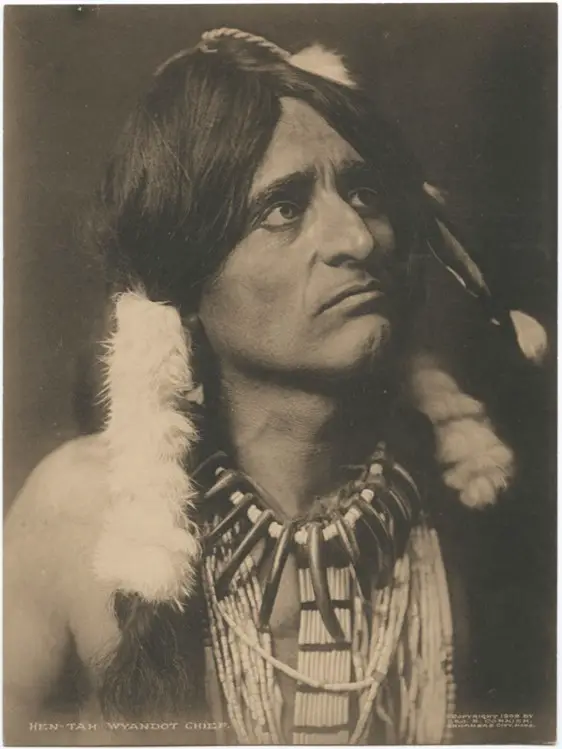
Sanilac County – Chief Sanilac of the Wyandot people or “spirit warrior.” After being destroyed by the Iroquois Confederacy in 1649-50, the remains of the Tionontati, Attignawantan, and Wenrohronon banded together to become the Wyandotte Nation. The Wyandot Nation of Anderdon is now located in Michigan.
Sandusky – Wyandot word “saundustee,” meaning “water.”
O-sag-a-nong meant the Saginaw valley, meaning the land of the Sacs.
East Saginaw is referred to as, Me-ta-guab-o-kee, meaning a place to get hickory for bows and arrows.
Sebewaing means little creek. The Ojibwe word “ziibiiweng” meaning “river place.”
Shiawassee River from Shi-a-way-sake, meaning straight river.
What is the Meaning of the Word Tittabawassee?
Tittabawassee from Tit-a-be-way-sake, meaning the river that heads north towards the bay. Native Americans such as the Sauk, Ojibwa, and Fox resided in Tittabawassee for thousands of years. Tittabawassee is derived from the Anishinaabemowin* phrase thraw-tippe-a-wasco-ach, which means “place of the light” in English. It perfectly describes the Tittabawassee River clearings and marshes that appeared after traveling out of Michigan’s once-dark virgin forests. *(also called Ojibwemowin, the Ojibwe/Ojibwa language, or Chippewa)
Pinnepog or Pinnebog – Chippewa for ‘partridge drum’.
Tuscola County – “Flatlands.”
What Does the Word Tawas Mean?
Tawas City and East Tawas are likely named after Michigan Indian Chief O-ta-was. This resort town has a lot of local legend attached to it. O-ta-was, the name of a Native Amerian chief, was most likely the nickname. Tawas Bay was thought to be O-ta-was’ Bay since the chieftain’s camp was located on its beach. This name is also a derivation of the name for Ottawa Point, which is located nearby.
Zilwaukee from Me-ta-gong, meaning where the timber first comes to the river.
Related Stories with Michigan Native Topics
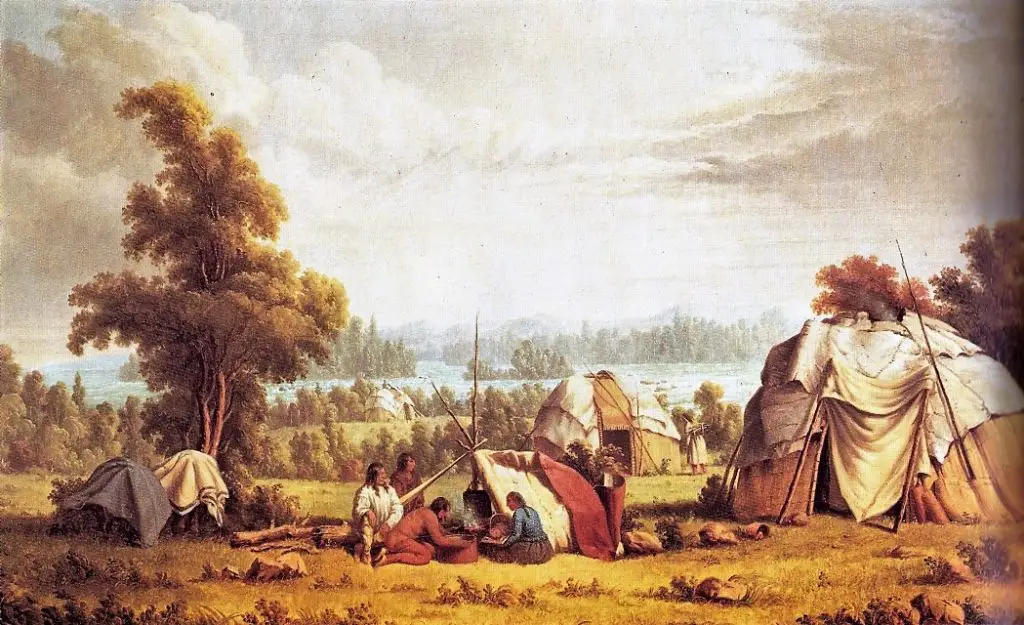
- The Indian Villages of the Upper Thumb Upon its ninety miles of shoreline were numerous Indian villages and camps. These were found due to the debris left by the dwellers. The Indians in Huron County Michigan had a village site every few miles along the shore of Saginaw Bay.
- The Major Indian Trail from Saginaw to Pointe Aux Barques It’s called several names; Sand Road, Trail Road, and Old Sand Road. While it’s said that M-25 took the place of much of the trail, the area between Bay Port and Port Austin has miles of the old trail still intact.
- How the Leader of the Ora Labora Colony Offered Indians Refuge During the 1871 Great Fire – Chippawa Indians from Harbor Beach came to the old colony north of Bay Port seeking shelter and food in the old abandoned colony once known as Ora Labora.
Sources of Michigan Indian Place Names
The Saginaw Valley. p. 277, Pioneer Collections Report of the Historical Society of the State of Michigan. 1898
The Meaning of Place Names in Michigan’s Thumb By Mark R. Putnam
*The featured image is a painting by Paul Kane depicting an encampment on the shores of Lake Huron in about 1845. While hunting and gathering away from their villages, bands of Northeast Indians lived in portable bark shelters. You can visit an encampment like this at Grand Portage State Park in Minnesota.
MLA Citation for this Story
Hardy, Michael. “Michigan Indian Place Names Of Saginaw Valley And Thumb.” Thumbwind, Thumbwind Publications, 12 May 2022, thumbwind.com/2020/02/20/michigan-indian-place-names.

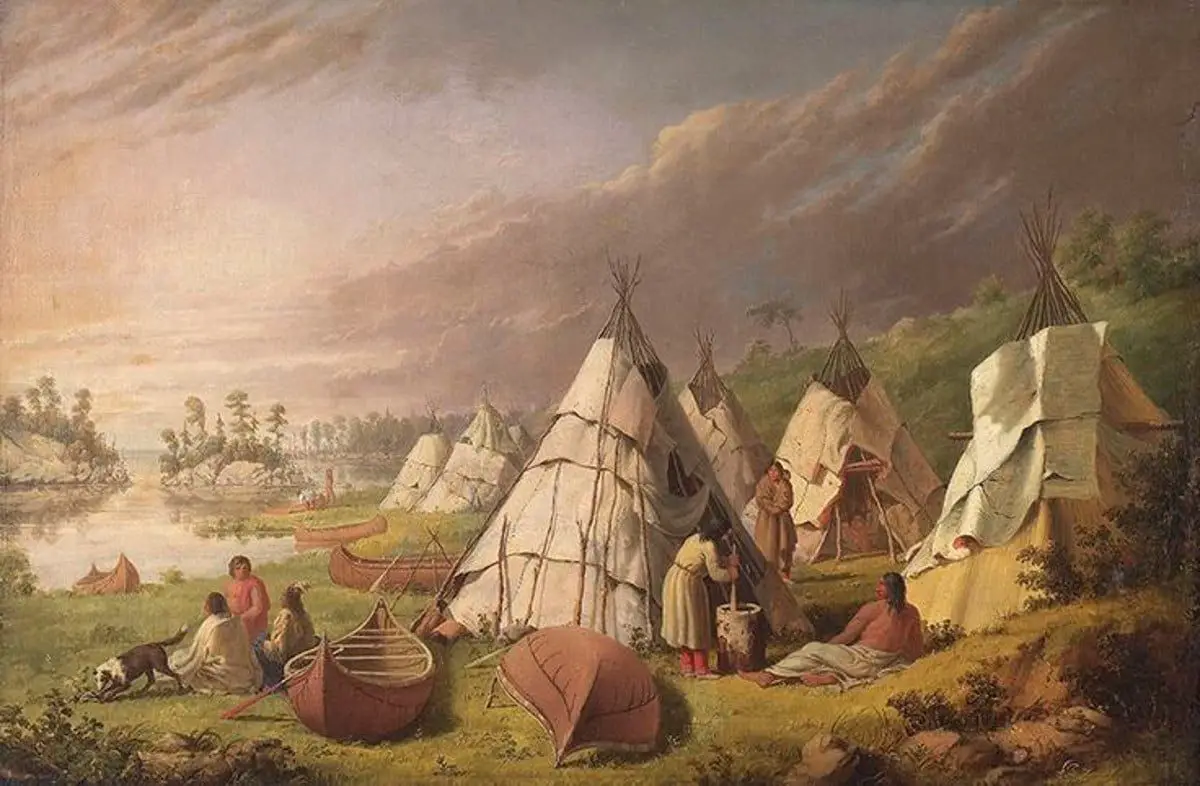

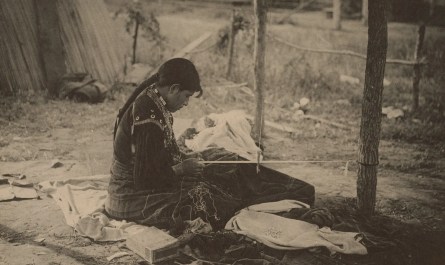
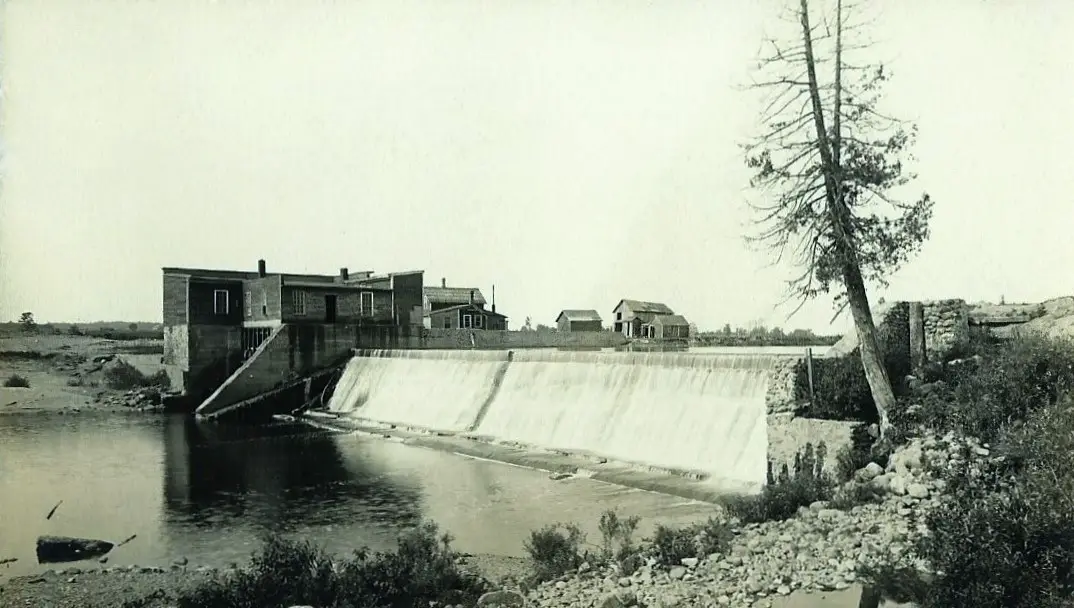

There were several very good ‘early’ articles about Native American place names….one of the finest was published through both the Totem Pole and The Michigan Archaeologist, authored by Walter Schmidt of Pinconning, who, at the bequest of Dr. Greenman at the University of Michigan, collected information for an ethnology Dr. Greenman was working on (ca., 1915-1920).
The word “Sanilac” is without any true historical provenance or linguistic meaning. It is an invention of Henry Schoolcraft, a bigot who erased the indigenous location names from several areas and replaced them with meaningless babble. “Sanilac” is one of the babble terms.
Interesting and informative for myself to learn the origination of the names of many places I have visited.
Our Community. Sandusky (that’s Michigan, not Ohio), incorporated as a village in 1885, was named by Wildman Mills. Mills was a large landholder in the area, and a lumberman. He named the City after Sandusky, Ohio. I don’t know how Sandusky, Ohio got it’s name. Maybe they had Wyandot Indians there.